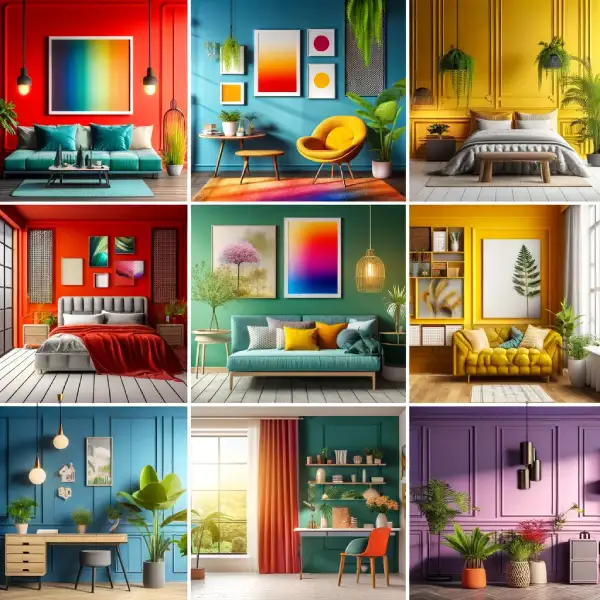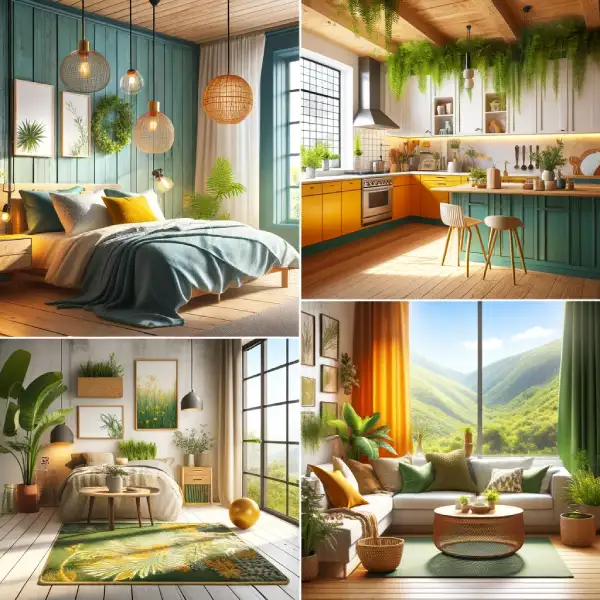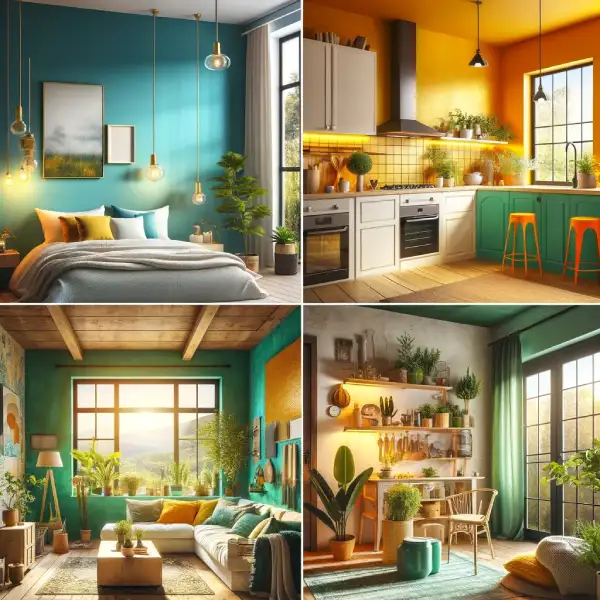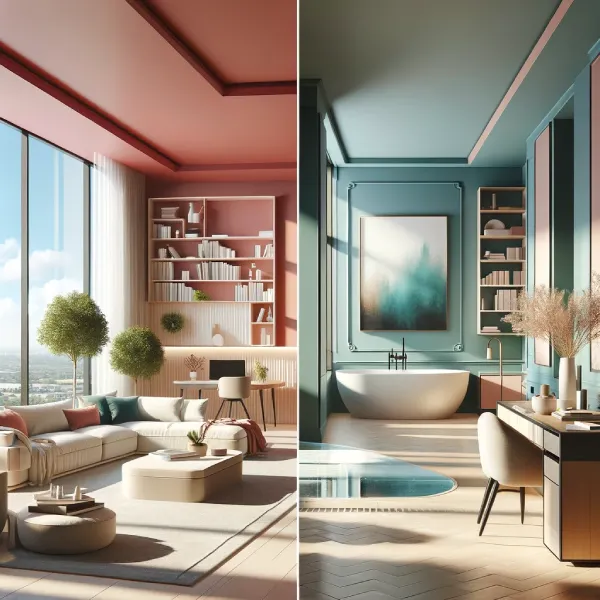This article is provided by Painters and Decorators London.
Introduction to Color Psychology and Home Decor
Within the intricacies of home decorating, the colors we choose are not merely about aesthetic appeal; they are a powerful form of non-verbal communication that profoundly affects our daily experiences. By leveraging color psychology, we can significantly influence the ambiance of a room and, by extension, the feelings and behaviors of its inhabitants. As professional decorators, we dive deep into the psychological effects of color to create spaces that resonate not only with our client's visual preferences but also with their emotional needs. The significance of this approach cannot be understated, as it transforms homes into sanctuaries that reflect the inner psyche of those dwelling within.
The Psychological Influence of Color
Colors carry with them a unique emotional charge that can set the tone for an entire room. Red, for instance, is often associated with excitement and appetite, making it a popular choice for dining areas and entertainment spaces. Blue, known for its calming effect, is favored in bedrooms and bathrooms, where tranquility is of the essence. Our understanding of how colors affect mood and behavior is deeply rooted in psychological research, allowing us to harness these effects to create bespoke environments that enhance the quality of life for our clients.

| Color | Emotional Response | Suggested Use |
|---|---|---|
| Red | Excitement, Hunger | Dining Rooms, Kitchens |
| Blue | Calm, Trust | Bedrooms, Bathrooms |
| Yellow | Cheerfulness, Energy | Children’s Rooms, Home Offices |
| Green | Relaxation, Health | Living Rooms, Home Offices |
| Purple | Creativity, Luxury | Creative Spaces, Lounges |
| Orange | Enthusiasm, Fun | Exercise Rooms, Playrooms |
This table showcases a few fundamental associations between colors and their potential applications within the home.
Choosing the Right Colors for Different Spaces

It’s crucial to account for the function and desired atmosphere of a particular space when selecting your color palette. We often recommend choosing soft pastels to create gentle, soothing experiences in private areas like bedrooms and bathrooms. Conversely, vibrant and stimulating colors suit communal spaces such as living rooms and kitchens where interactions are frequent and lively. Ultimately, the aim is to use color to enhance the room’s purpose, creating an environment that is both visually appealing and emotionally aligned with its use.
Trends in Color Psychology for Home Decor

Staying current with trends while respecting the timeless principles of color psychology is key to creating spaces that are at once modern and psychologically grounded. For example, the present inclination towards earth tones draws from our collective desire for stability and reconnection with nature. Integrating these trends thoughtfully can ensure that your home remains stylish yet comfortable and emotionally nurturing.
| Trending Color | Psychological Effect |
|---|---|
| Earth Tones | Grounding, Stability |
| Soft Pastels | Calming, Nostalgic |
| Jewel Tones | Boldness, Vibrancy |
This highlights how trending colors can serve our psychological needs and be woven into the fabric of our living spaces.
Implementing Color Psychology in Home Decorating Practices
Our advice for integrating color psychology into your home is to be mindful of the purpose of the room, the atmosphere you wish to evoke, and the interplay between color, light, and texture. Starting with a neutral base provides flexibility to introduce color through accessories, ensuring the balance is harmonious without sacrificing the room’s mood or aesthetic.
Case Studies

Real-life case studies vividly illustrate the impact color choices can make. Homes that have adopted color psychology principles show significant transformations, visually and emotionally. Assessing the before and after effects provides a concrete understanding of how color alterations can revitalize a space, emphasizing the dramatic difference that mindful color selection can bring to any home.
Conclusion and Key Takeaways
Color psychology offers more than just a palette of shades for our homes; it provides a set of tools for creating a space that truly reflects and supports our emotional well-being. In closing, we urge you to embrace the psychological potential of color in your living space, crafting a home that is not only visually stunning but also emotionally enriching.
| Key Takeaways |
|---|
| Colors evoke emotions and can change a room’s atmosphere. |
| Each space’s function should guide its color scheme. |
| Trends can inform decor but should align with psychological needs. |
| A balanced approach to color can greatly enhance a home’s environment. |
As you consider color for your next home project or renovation, remember the role it plays in influencing mood and ambiance. Whether you are guided by the latest trends or timeless psychology, color remains an essential element of home decor.
For more information on how to expertly incorporate color psychology into your home, visit Cloud Painters London.
FAQs on Color Psychology in Home Decor
Soft blues, greens, and lavenders are known for their soothing qualities and are excellent choices for bedrooms. They promote relaxation and can help improve sleep quality.
Yes, colors can influence the perceived warmth or coolness of a space. Warm colors like reds, yellows, and oranges can make a room feel cozier and warmer, while cool colors like blues and greens can make a room feel more refreshing and cooler.
Lighter colors can make a small space appear larger and more open. Neutral shades or pastels are great options. Mirroring the natural light in the room with your color choice can also enhance the openness of the area.
Bold colors can be a powerful tool in home decor when used correctly. They can add vibrancy and energy to a room but should be balanced with neutral tones or used in moderation as accents to avoid overwhelming the space.
A common mistake is not considering the lighting in a room, which can significantly affect how a color is perceived. Another mistake is using the same color intensity throughout the house, which can lead to a lack of variety and emotional dynamic in the home.
